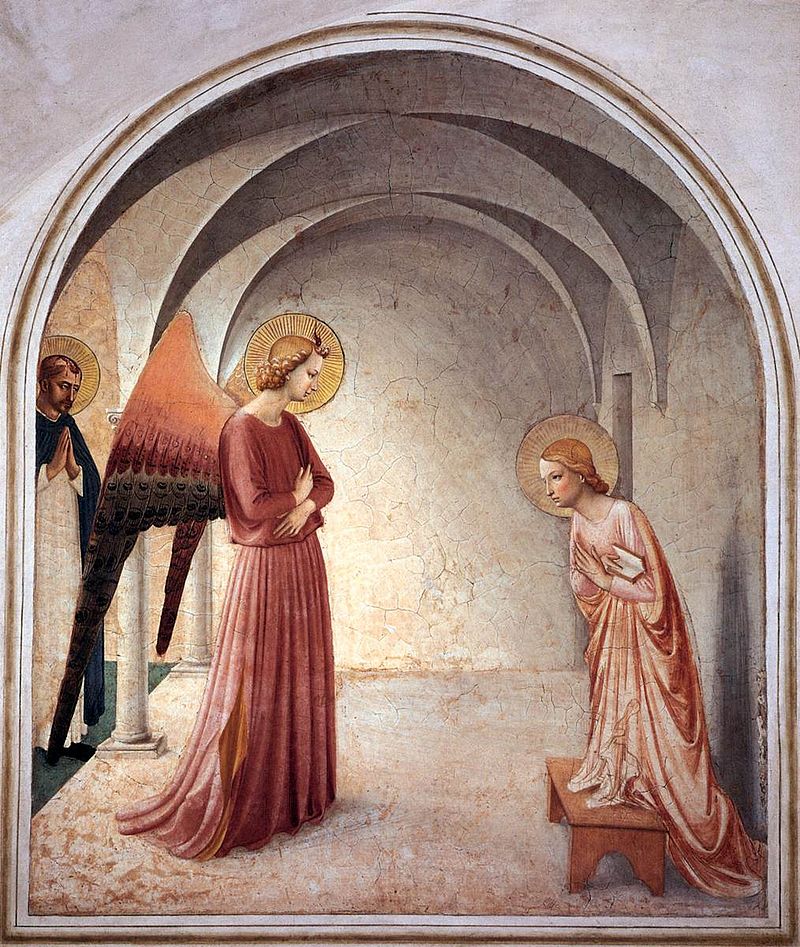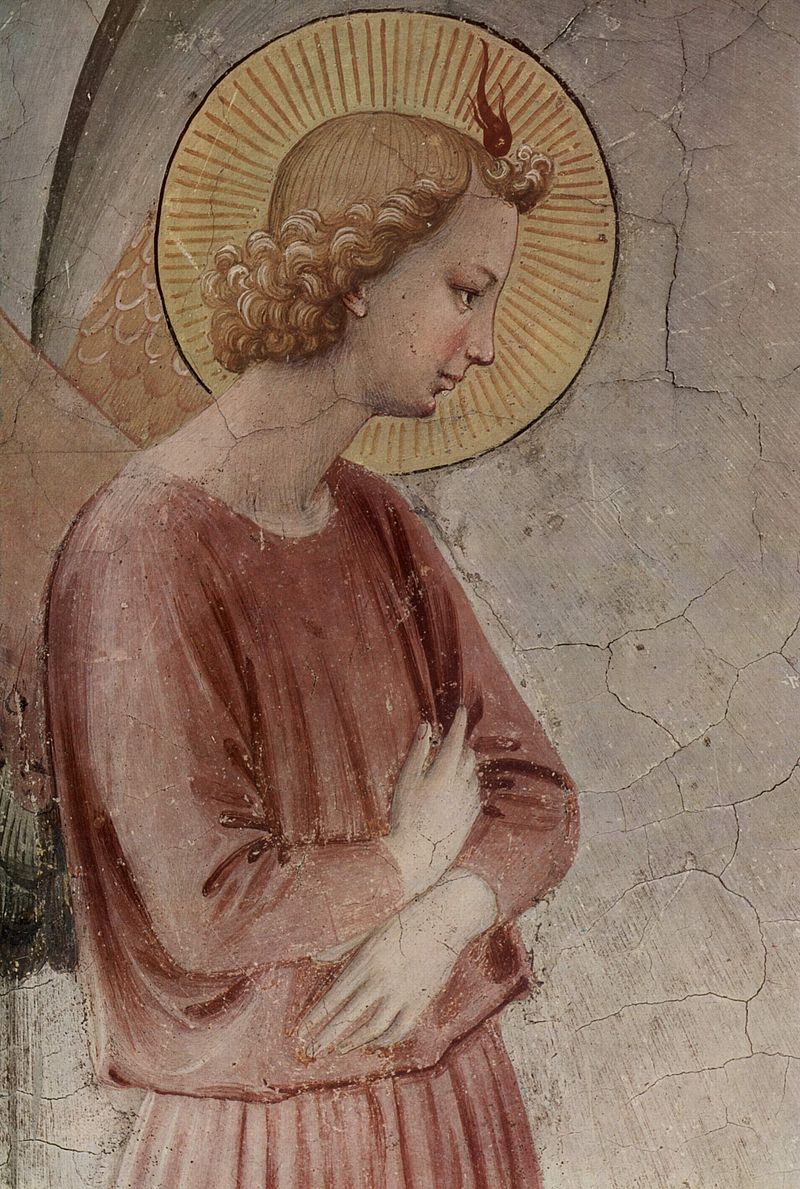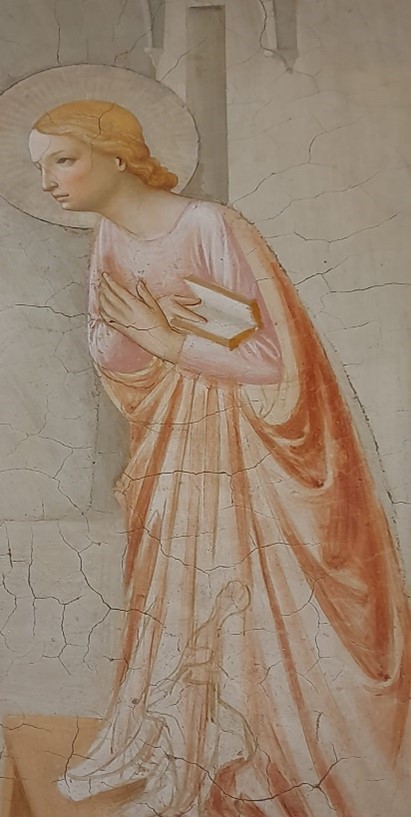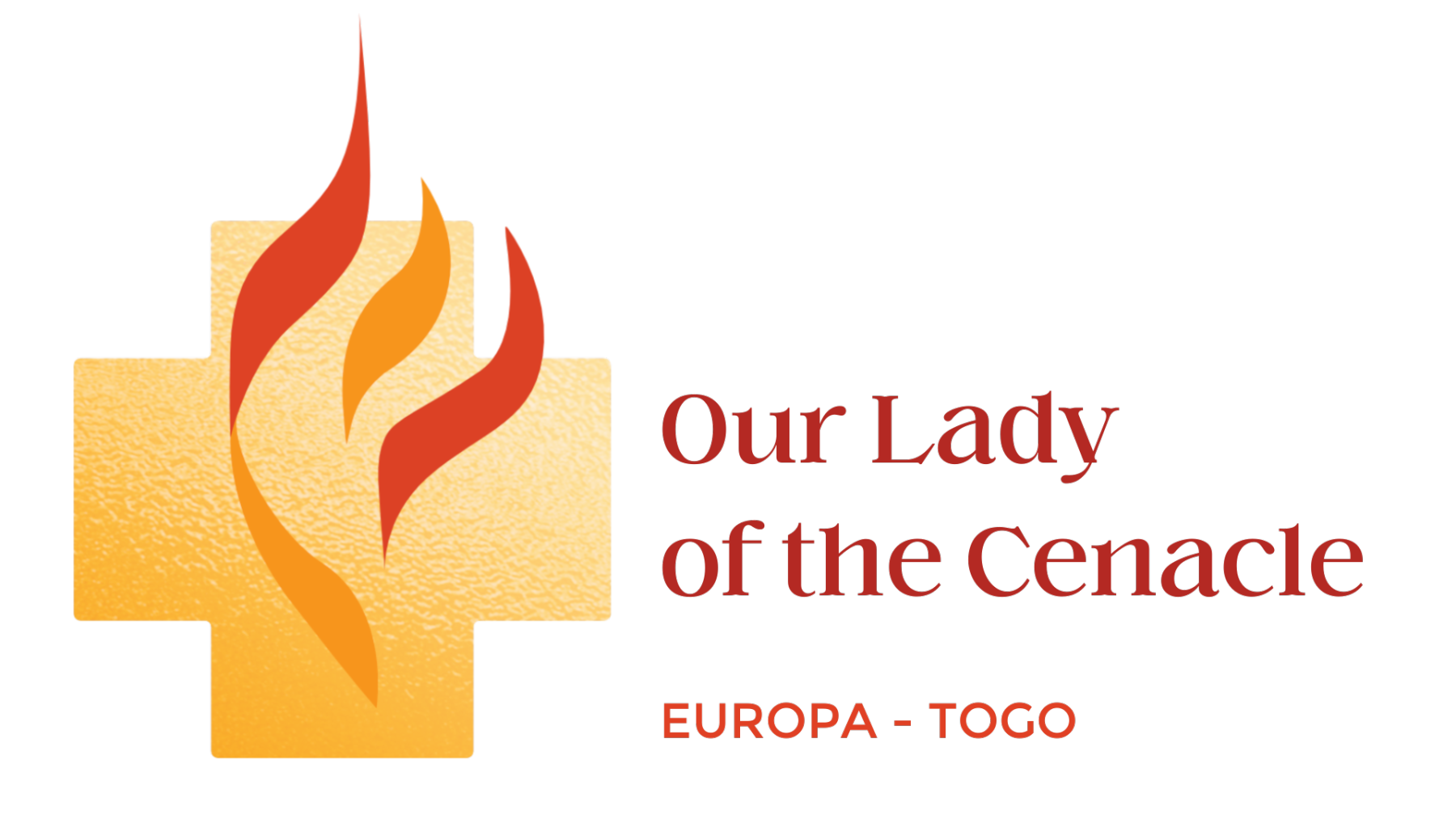THE ANNUNCIATION FROM FRA GIOVANNI DA FIESOLE, KNOWN AS BEATO ANGELICO
The ANNUNCIATION in the cell of the San Marco convent may be less well-known than the one at the top of the entrance staircase, but it has a singular intense feeling within Fra Angelico’s art.


The silent exchange of glances between the Archangel Gabriel and the Virgin Mary carries a force that reaches directly into the soul: no written words are needed to grasp all that they communicate in silence. The “nakedness” of Mary’s yes is accentuated by the slenderness of her profile, reduced to an assent that dissolves entirely into light. Her pink mantle, with shades seemingly infused by the grace of God, envelops her like a vessel of light, transparent as alabaster. The Virgin’s gathered hair emphasizes the essential purity of her face, her chaste expression, her lean profile, and her detachment from worldly vanity and any form of individualism that might resist God’s will. Mary is wholly turned toward Him, toward the God who calls her to be a mother, while the Archangel speaks to her in silence, his gaze instilling trust.
As for this celestial messenger, Angelico has rendered his corporeality with denser, fuller color, perhaps even more substantial than that of the Virgin of the Annunciation herself. And while the vanishing point dissolves into the stark simplicity of the bare wall—only gently punctuated by the ceiling’s arches and Michelozzo’s columns, which replicate those seen throughout the convent complex (since Michelozzo oversaw the restoration just as Angelico oversaw its decoration)—this fresco echoes the harmony of white (Faith), green (Hope), and red (Charity), the theological virtues expressed through color, as can also be observed in other paintings within the convent’s cells.

In this austere composition, only a simple stool is present, reminding us that at the decisive moments of our History, there are often no witnesses. The only one who contemplates the mystery is Saint Peter Martyr, that Peter of Verona who perished in the mid-13th century, struck on the head by an axe during a preaching campaign. A mystery that embodies both eternity and materiality at once, presence and vision together. This materiality is evidenced by the shadow of the Virgin of the Annunciation cast upon the wall behind her.
It is the mystery of a chaste painting, made of light yet dense with contemplated truths, which can only be translated into the exhortation so dear to Angelico the painter: “to contemplate and to transmit to others what one has contemplated“.
In this fresco, Angelico truly surpasses every master before him and of his time: from Giotto, he inherits the purity of essential lines; from Masaccio, the solidity of bodies and volumes. Yet from prayer and his mastery as an artist, he derives a light that is not “natural” but “divine”—a theological light.
In the Virgin of the Annunciation, we find both her assent and her self-renunciation. And that small, slightly open book in her hands speaks to us of her understanding of perspective, as if the Michelozzian columns, already mentioned, were not enough to remind us of Angelico’s contemporaneity with the early Florentine Renaissance.
Marisa Marmaioli
